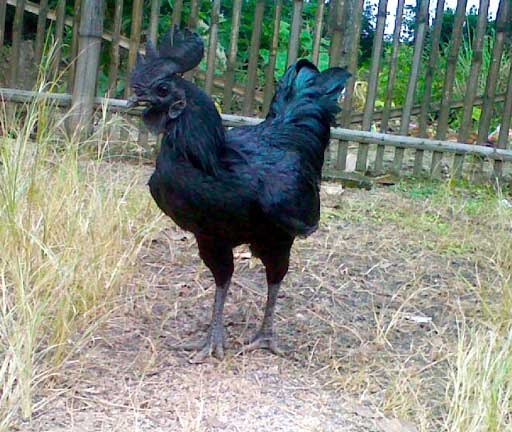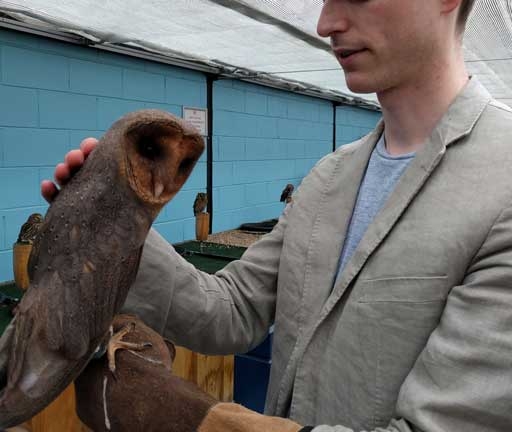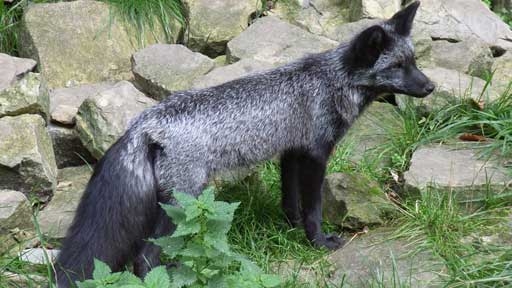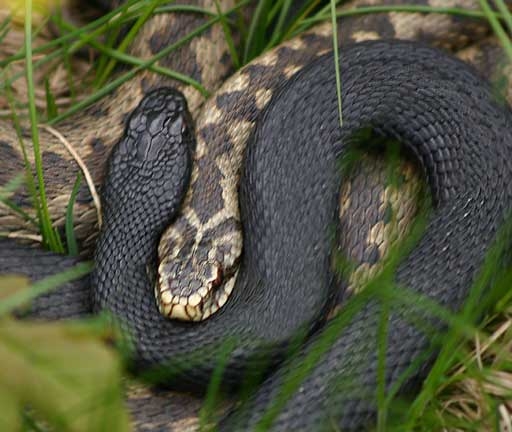
You’ve probably heard of albino animals, but what about their opposite? Melanistic animals have an excess of a pigment called melanin that makes their skin, hair or fur very dark, or in some cases, completely black.
Black King Penguin

Penguins are easily identifiable by their trademark tuxedo coloring, but in extremely rare cases, melanism can make them all-black. Lucky wildlife watchers spotted this completely black king penguin among a sea of other black and white birds in the British territory of South Georgia.
Any kind of melanism is rare in penguins, but one expert told the National Geographic that the odds of one that’s completely black are “one in a zillion.”
Black Panther

Perhaps one of the most popular melanistic creatures is the mysterious black panther. But the black panther isn’t a single species — the name actually refers to any very dark member of the Panthera species, including jaguars and leopards.
Melanistic spotted leopards and jaguars still have the typical patterns, but they’re just harder to see because of the coloring.
VIDEO: Black Panther Attacks Zookeeper
Melanistic Black Wolf

Black wolves are basically the same as regular gray wolves … except for their color. Some genetic researchers hypothesize they get their dark coloring from the same gene mutation that makes dogs black, and the mutation was passed on during dog-wolf hybridization. Interestingly, these wolves actually turn gray as they age.
The melanistic wolves are mostly found in North America and seem to thrive in forested areas where they make up about 62 percent of the wolf population, though scientists aren’t sure why.
All-Black Chicken

No, that’s not Photoshop. Every part of this exotic chicken is black, including its internal organs and bones.
The sleek-looking onyx bird is called Ayam Cemani and found mostly in Indonesia, where it’s believed to have spiritual powers. But demand is now so high for the rare bird that a single chicken can sell for thousands of dollars on the black market.
Melanistic Barn Owl

Barn owls are generally pale in color, often appearing completely white at night. But ever so often darkly-colored individuals like the one in this picture are born with melanism caused by 100,000 to 1 genetic mutation, according to The Telegraph.
Unlucky melanistic barn owls often don’t last long in the wild, as their mothers often refuse to feed them and force them out of the nest.
Melanistic Black Squirrel

If you live in Canada, the United States or the United Kingdom, chances are you’ve probably spotted a black squirrel before. They’ve actually been introduced to the wild in hopes of increasing their numbers. Black squirrels are eastern gray or fox squirrels that have a genetic mutation. They can range from jet black (if they have two copies of the mutant gene) to brownish-black (if they have one copy.)
Melanistic Silver Fox

Red foxes with melanism are called silver foxes. Their fur is sometimes completely black or mixed with dark, silvery grey and patches of white.
Silver foxes were often domesticated and their fur was actually considered to be highly valuable.
Melanistic Black Adder

Quite a few species of snakes have melanistic individuals, including King cobras, rat snakes, and adders (see photo.) Black adders may actually have an advantage as their dark coloring allow them to warm up faster and hunt on days that would be too cold for other snakes.
The increased feeding time means they can grow faster and larger than lighter colored adders. However, their dark colors are harder to camouflage.
Melanistic Blue-Tongued Skink

Even without their jet black coloring, these Australian lizards are already pretty weird. They have blue tongues which they stick out at enemies as a warning signal. But add in an extra dose of melanin and you’ve got these babies that look like something out of a sci-fi movie!
Black Flamingo

This may just be the rarest of all. A black flamingo was spotted at the Akrotiri Environmental Center in Cyprus in 2015, and may be the only one of its kind in the world. (One was also spotted in Israel two years earlier, but some researchers think it’s the same bird!)
Flamingos have long fascinated people with their pretty pink coloring, which comes from pigments in the crustaceans and algae they eat. But a surplus of melanin means this bird’s feathers are almost totally black – except for a few patches of white on its butt.
See the bird on video:




